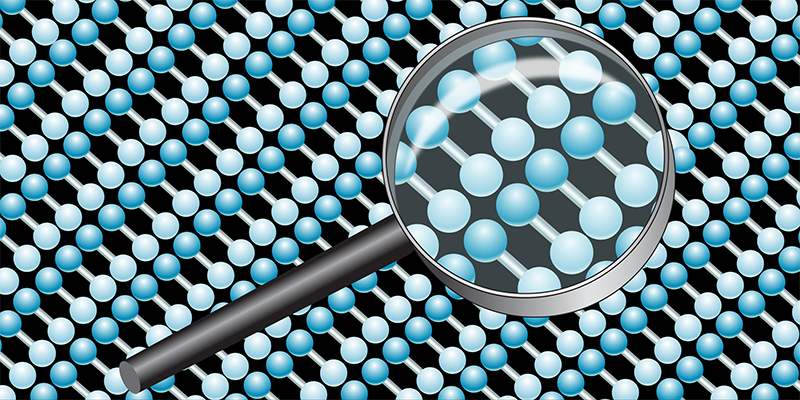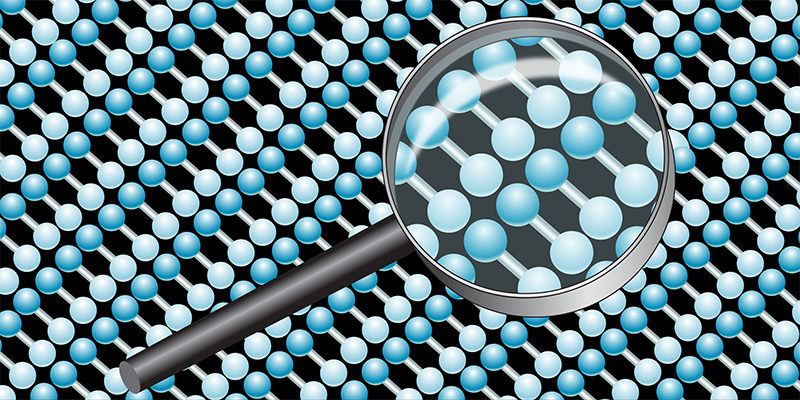Visualizing Atom Currents in Optical Lattices
The Born rule, formulated almost a century ago, says that measuring a system yields an outcome whose probability is determined by the wave-function amplitude. As if by magic, preparing a quantum system in the same way and performing the same measurement can produce different results. For a long time, the Born rule’s probabilistic nature was more of a theoretical concept. But with the advent of quantum simulators, it has become an experimental reality. So-called snapshots—different measurement outcomes of the same quantum many-body state—are routinely measured. In the case of cold atoms in optical lattices, such snapshots are images that show with single-site resolution whether an atom is present or not. Now Alexander Impertro of the Ludwig Maximilian University of Munich and his collaborators have devised a way to take snapshots not just of atoms’ whereabouts but also of properties analogous to currents and local kinetic energy in crystals [1]. This new addition to the quantum simulation toolbox will enable new analyses of quantum many-body systems through novel observables.
Historically, the interest of quantum many-body physicists often focused on observables accessible in solid-state experiments. One example comes from neutron-scattering experiments: here, the spin structure factor can be accessed, which quantifies correlations between spins as a two-point correlation. Snapshots—or, more formally, quantum projective measurements—contain much more information than two-point correlators. Because individual snapshots can be analyzed in a site-resolved way, it’s possible to evaluate higher-order correlations. This ability has led to a surge of research and has opened completely new perspectives on a variety of problems where high-order correlations play a distinct role. Among them are nonequilibrium behavior in critical regimes [2] and the interplay of spin and charge degrees of freedom in doped antiferromagnets, where snapshots have revealed the presence of so-called string patterns [3].
For a many-body system of indistinguishable particles, it’s convenient to describe snapshots in terms of each site’s occupancy—that is, to use to the occupation number basis. In practice, the wave function is typically projected onto the occupation number basis: occupation by an atom at each site is measured with a corresponding probability. That choice of basis restricts measurements to observables, such as density correlations, whose operators are diagonal in the basis—meaning that these operators are scalar. Put differently, one obtains information from the wave function’s amplitude but not from its complex phase. Off-diagonal observables, such as current densities, are typically not directly accessible, as they require complicated basis transformations involving more than one site.
Snapshots are necessarily taken in the occupation number basis—that is, the experiments are based on measuring whether an atom occupies a site or not. Consequently, accessing off-diagonal observables requires a trick. There have been different proposals to do this by letting the simulating system evolve under its own “native” Hamiltonian. Here, the main idea is that the time evolution provides a transformation that maps the occupation number basis onto the basis of interest. One particular proposal uses a free-fermion Hamiltonian, which, being theoretically well understood, makes it easier to interpret the final measurement [4]. An alternative approach is to add auxiliary sites, which should allow access to arbitrary observables with the help of classical postprocessing [5].
Impertro and his collaborators have now taken the first experimental step toward measuring off-diagonal observables. They used a superlattice to create a 2D array of double wells, which isolated two sites at a time. This has the advantage that the ensuing time evolution under the native Hamiltonian is invertible, which means that the final measurements in the occupation number basis can ultimately be transformed back to more complex observables.
The researchers observed the snapshots through a quantum gas microscope, whose high-numerical aperture imaging made it possible to resolve individual sites separated by just a few hundred nanometers (Fig. 1). By choosing different chemical potentials for the two sites in the double well and different final evolution times, the measurement basis could be transformed to the current or local kinetic energy basis or any linear combination of them. Thanks to the ability to address each site individually, different potentials could be used for different double wells, such that a combination of different bases within one snapshot was also realized.
The work of Impertro and his collaborators opens rich possibilities for the quantum projective measurement of different operators at different positions. What’s more, the same toolbox can also be used for state preparation, for example, to initialize the system in a product state featuring a complex spatial pattern. Completely new analysis methods could now be brought to bear on these new kinds of data—among them, full counting statistics of currents, the measurement of Hall responses, and the detection of hidden off-diagonal long-range order [6] through single-snapshot analysis [7]. It might even be possible to measure long-range pairing correlations to detect a cold-atom analog of unconventional superconductivity. The controlled application of these two-site transformations also provides a crucial step toward an analysis in terms of so-called classical shadows [8], where the combination of such local transformations and classical postprocessing enables the measurement of quantities like the entanglement.
References
- A. Impertro et al., “Local readout and control of current and kinetic energy operators in optical lattices,” Phys. Rev. Lett. 133, 063401 (2024).
- M. Rispoli et al., “Quantum critical behaviour at the many-body localization transition,” Nature 573, 385 (2019).
- C. S. Chiu et al., “String patterns in the doped Hubbard model,” Science 365, 251 (2019).
- J. Denzler et al., “Learning fermionic correlations by evolving with random translationally invariant Hamiltonians,” arXiv:2309.12933.
- M. C. Tran et al., “Measuring arbitrary physical properties in analog quantum simulation,” Phys. Rev. X 13, 011049 (2023).
- N. Read, “Order parameter and Ginzburg-Landau theory for the fractional quantum Hall effect,” Phys. Rev. Lett. 62, 86 (1989).
- F. Pauw et al., “Detecting hidden order in fractional Chern insulators,” Phys. Rev. Res. 6, 023180 (2024).
- H.-Y. Huang et al., “Predicting many properties of a quantum system from very few measurements,” Nat. Phys. 16, 1050 (2020).





